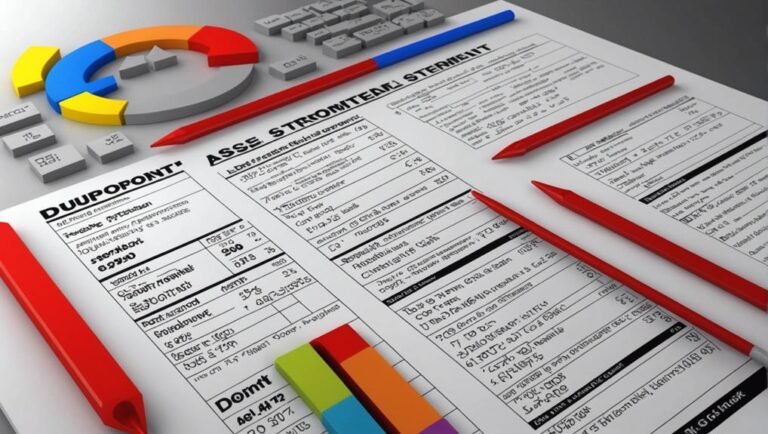Copyright Definition, Types, and How It Works
Copyright is a legal protection granting creators exclusive rights to their original works, preventing unauthorized duplication. It focuses on controlling reproduction and distribution, benefiting creators financially and encouraging innovation. Different from trademarks and patents, copyright safeguards artistic and literary creations. The U.S. Copyright Office administers laws, maintains records, and provides ownership evidence, with registration enabling legal action and protection. Understanding copyright types and workings is important for creators and innovators seeking to protect their intellectual property and secure their rights. Further insights into registration processes, infringement, and enforcement mechanisms are essential for thorough understanding of copyright law.
Key Takeaways
- Copyright protects original works from duplication.
- Types of intellectual property protection include copyright, trademarks, and patents.
- The U.S. Copyright Office administers copyright law and registration.
- Patents grant exclusive rights to inventors for about 20 years.
- Trademarks safeguard symbols, names, and slogans for brand protection.
What Is Copyright?
Copyright is a legal right granted to the owner of intellectual property, protecting their original works from unauthorized duplication or use.
The basics of copyright law revolve around safeguarding the rights of creators, ensuring they have control over the reproduction and distribution of their creations.
Creator rights are at the core of copyright protection, granting authors the exclusive right to reproduce, distribute, perform, display, and license their works.
This legal framework enables creators to benefit financially from their creations and incentivizes the generation of new and innovative content.
Understanding Intellectual Property Protection
Intellectual property protection encompasses various legal mechanisms that safeguard creators' rights and innovations, including copyrights, trademarks, and patents.
Types of Protection:
- Copyright: Protects original works from duplication without permission.
- Trademarks: Safeguard distinguishing materials like logos and brand names.
- Patents: Grant exclusive rights to inventors for their inventions for a limited time.
These types of protection are essential for creators and businesses to safeguard their intellectual property. Understanding the distinctions between copyrights, trademarks, and patents is important in ensuring the proper protection of creators' rights and innovations.
Importance of U.S. Copyright Office
The role of the U.S. Copyright Office in administering and overseeing copyright law in the United States is essential for ensuring the protection and enforcement of creators' rights.
The Copyright Office plays a vital role in maintaining a public record of copyright information, which provides creators with legal evidence of ownership.
Registering works with the Copyright Office offers benefits such as the ability to pursue legal action against infringement, statutory damages, and attorney's fees in successful litigation.
Additionally, registration before infringement occurs or within three months of publication allows for the possibility of receiving statutory damages and attorney's fees.
Insights Into Patents
The exploration of patent insights investigates the exclusive rights granted to inventors for their novel and non-obvious creations, distinct from the domain of copyright protection.
- Patent Duration
- Patents typically have a duration of 20 years from the filing date.
- This limited period allows inventors to exclusively benefit from their creations before they enter the public domain.
- After the expiration of the patent, the invention becomes freely available for others to use and build upon.
- Patent Application
- To obtain a patent, inventors must submit a detailed patent application.
- The application must demonstrate the invention's novelty, utility, and non-obviousness.
- The United States Patent and Trademark Office (USPTO) oversees the registration process to ensure compliance with patent laws.
Exploring Trademarks
Exploring the domain of trademarks involves safeguarding and identifying symbols, names, and slogans that differentiate goods and services in the commercial landscape. Trademarks play a vital role in brand protection by providing exclusive rights to use these identifiers.
Registering a trademark with the USPTO offers nationwide protection and helps prevent others from using similar marks without authorization. This registration process guarantees that brands are legally recognized and protected.
Infringement of trademarks occurs when unauthorized parties use these identifiers, leading to potential legal action. By understanding the importance of trademark registration and brand protection, businesses can establish a strong market presence and build consumer trust through the distinctiveness of their symbols, names, and slogans.
Copyright Registration Process
Exploring the detailed process of registering copyrights reveals the careful steps creators must navigate to secure legal protection for their original works. This process involves:
- Filing an Application: Creators need to submit an application to the U.S. Copyright Office, including details about the work being registered.
- Paying the Fee: A fee must be paid along with the application, which varies depending on the type of work being registered.
- Submitting a Copy of the Work: A copy of the original work must be provided to the Copyright Office for review and record-keeping purposes.
Through this process, creators establish that their intellectual property is officially recognized and receive enhanced copyright protection.
Copyright Infringement and Enforcement
Exploring the domain of intellectual property protection, particularly in the context of copyright registration, leads to a critical consideration of the implications surrounding copyright infringement and its enforcement mechanisms.
Copyright infringement occurs when someone violates the exclusive rights of the copyright owner by reproducing, distributing, displaying, or performing the protected work without permission. In cases of infringement, the copyright owner can take legal action to enforce their rights. Legal action may result in consequences for the infringer, including injunctions to stop the unauthorized use, monetary damages, and in some cases, criminal penalties.
Enforcing copyright protection is essential to safeguard the rights of creators and maintain the integrity of intellectual property laws.
Conclusion
In summary, copyright plays a vital role in safeguarding the intellectual property rights of creators across various fields. By grasping the intricacies of copyright law, individuals and businesses can protect their original works and innovations from unauthorized use.
How can we guarantee that the delicate balance between protecting creators' rights and promoting innovation is maintained in the ever-evolving landscape of intellectual property rights?







